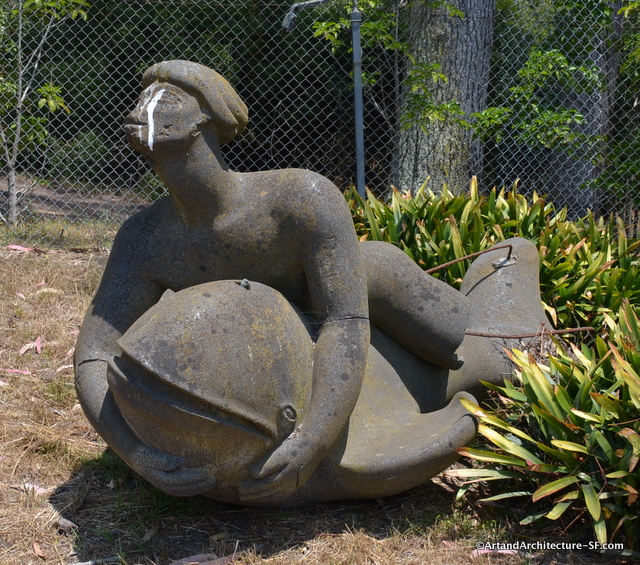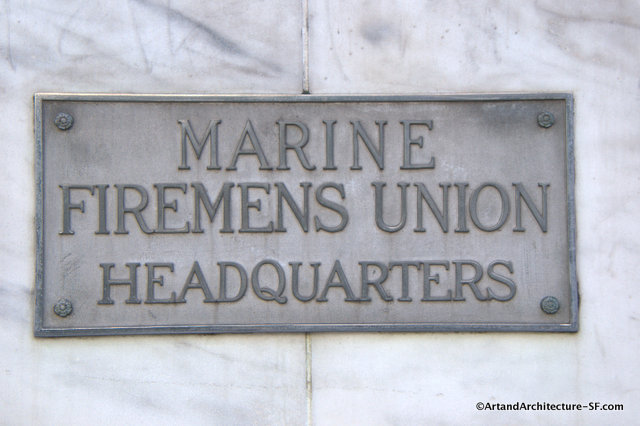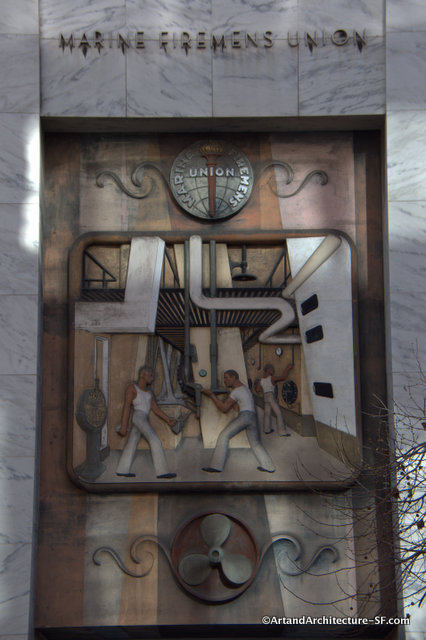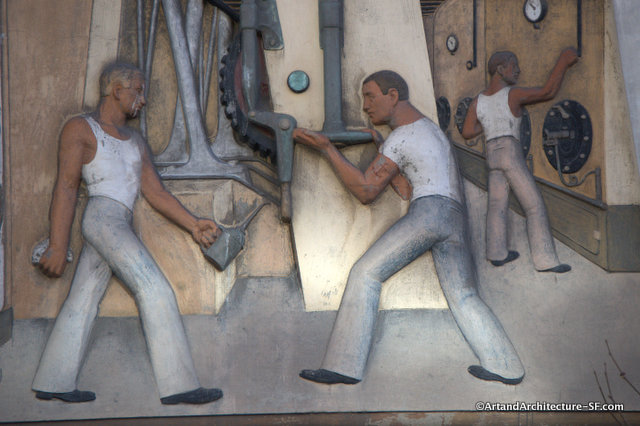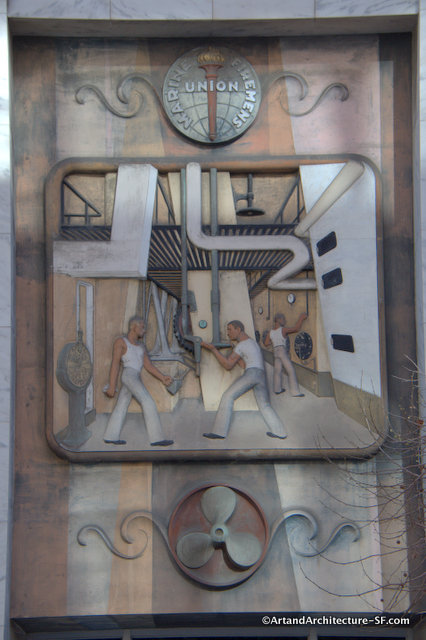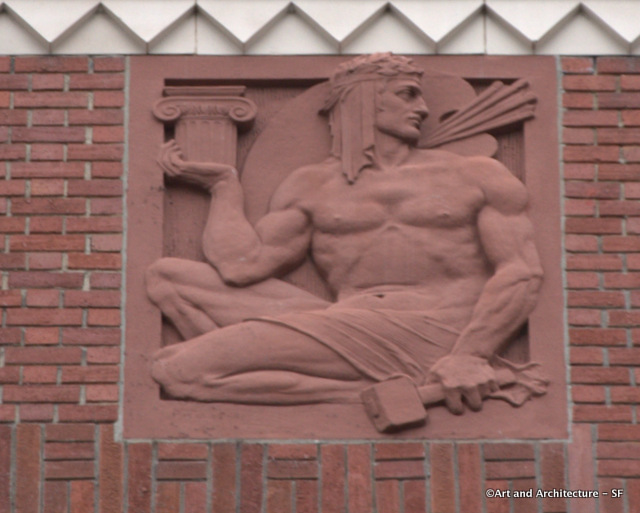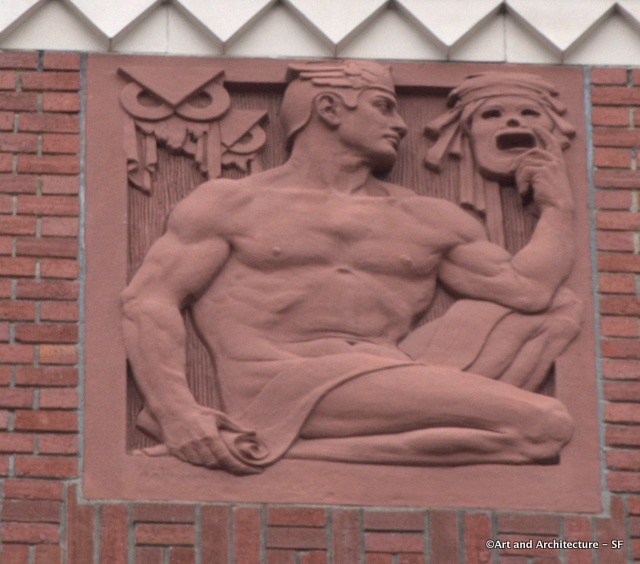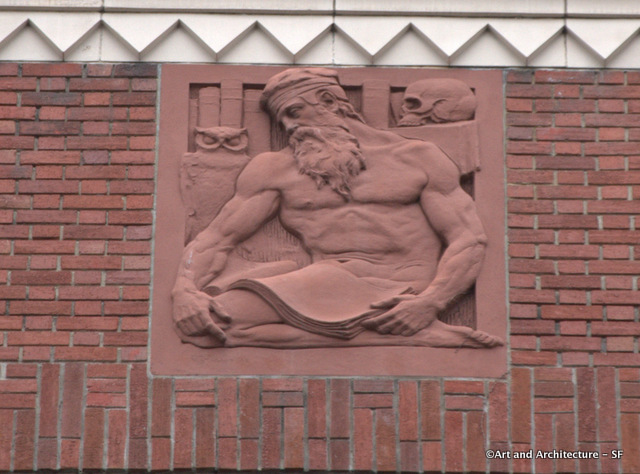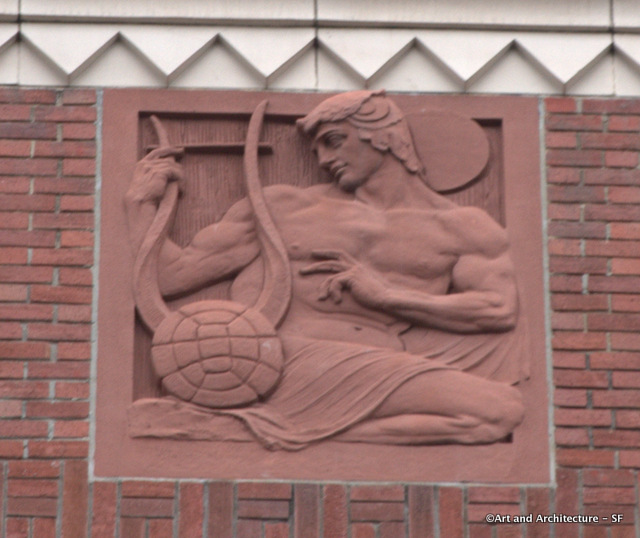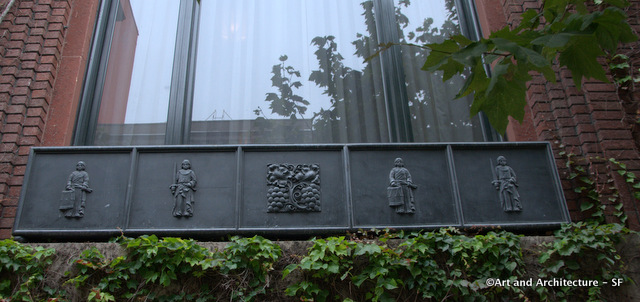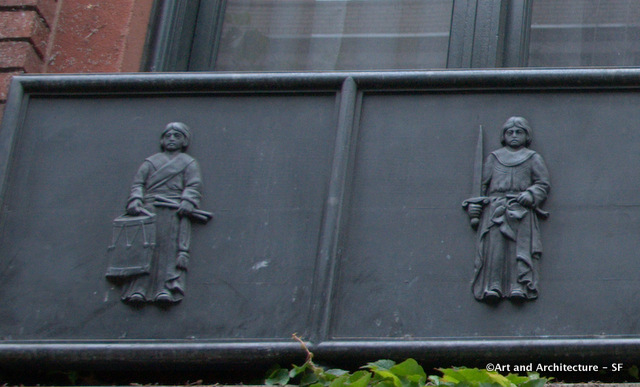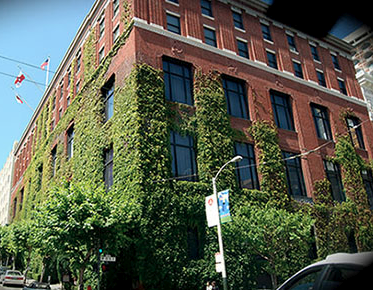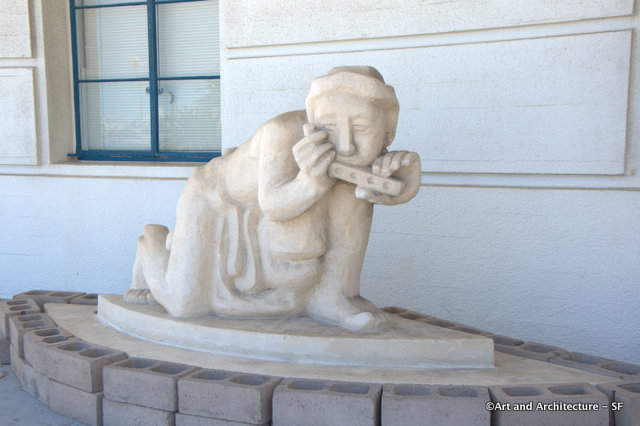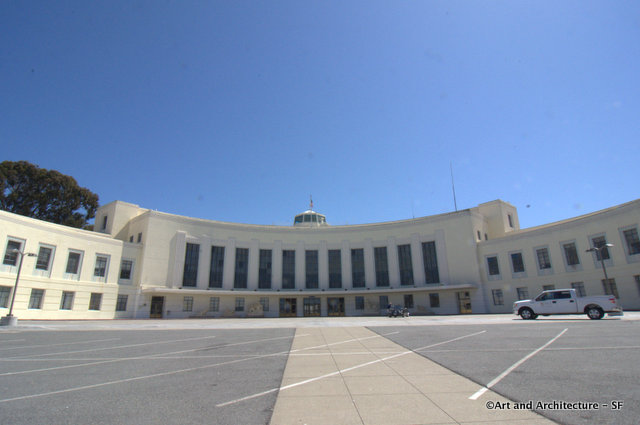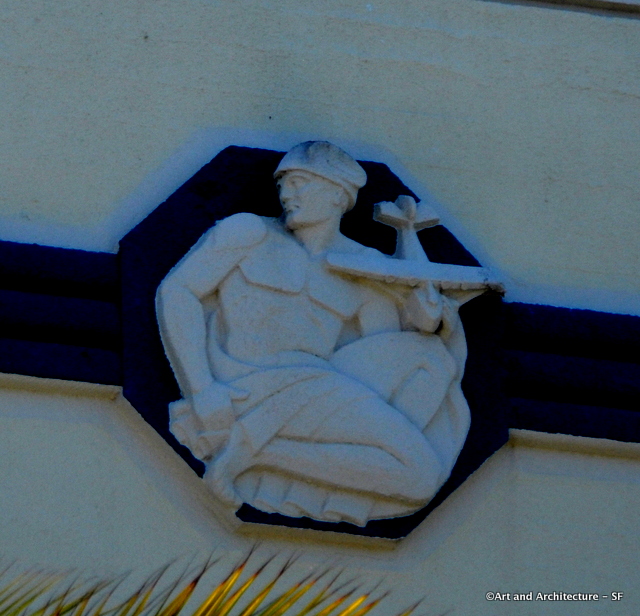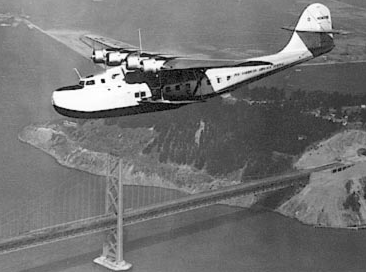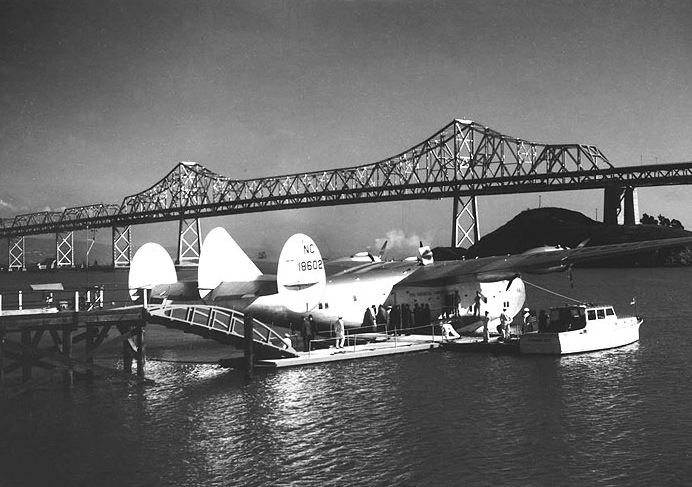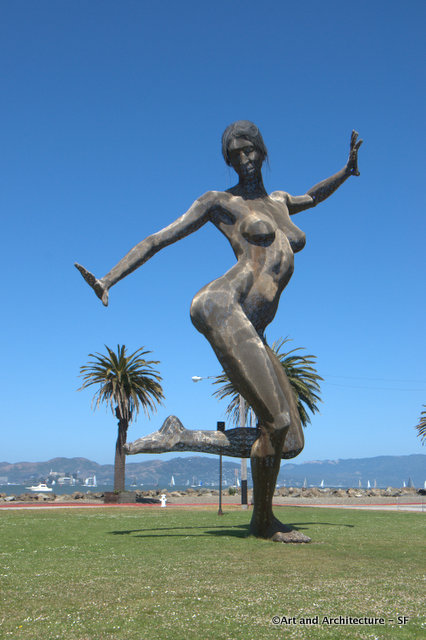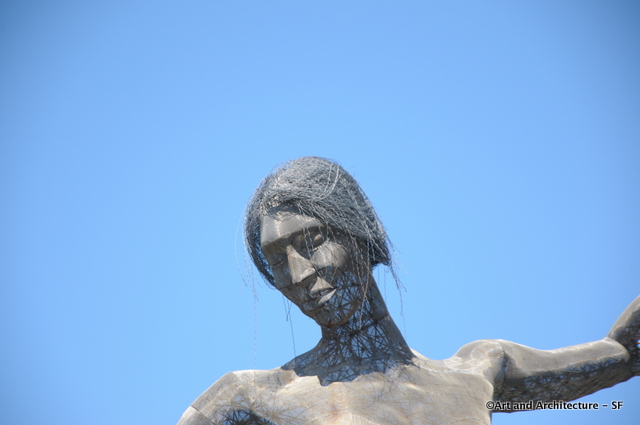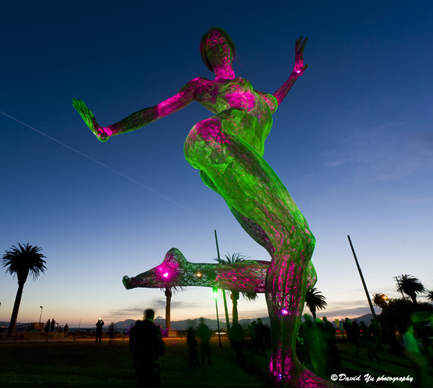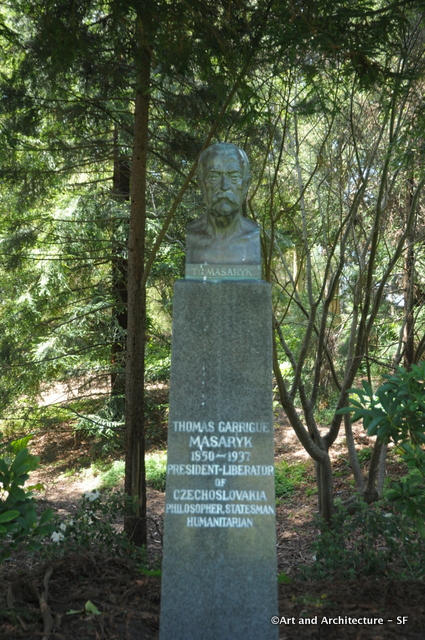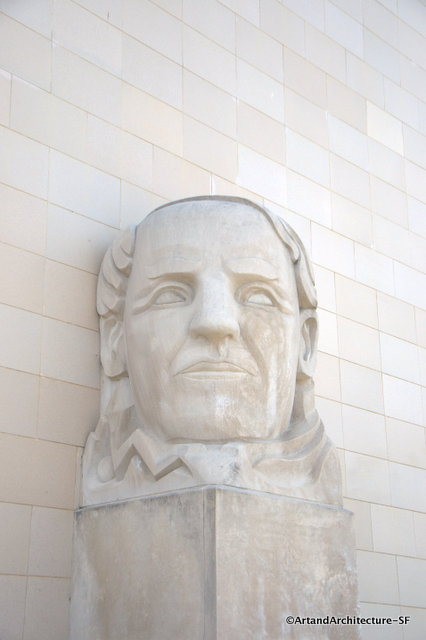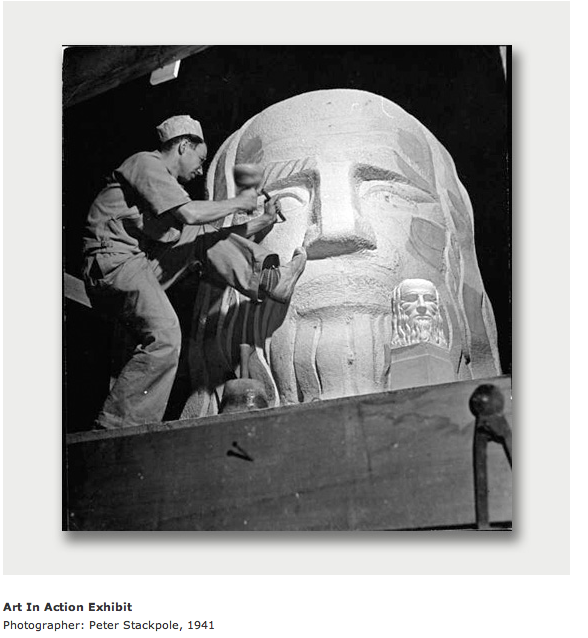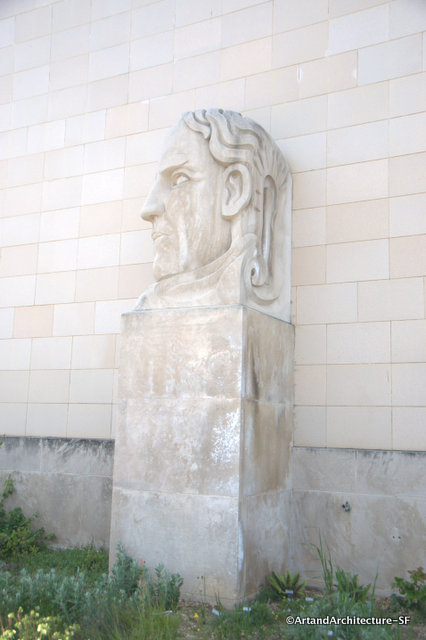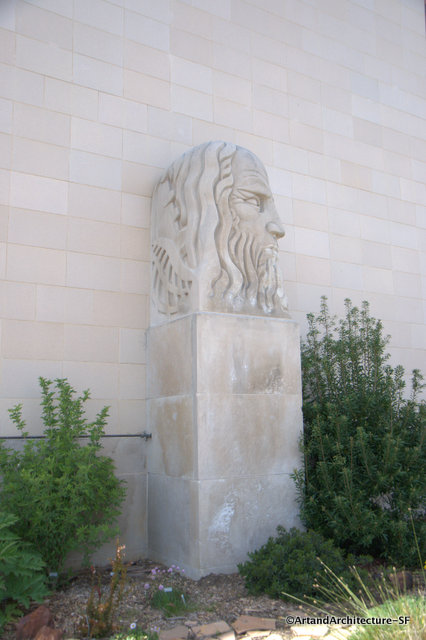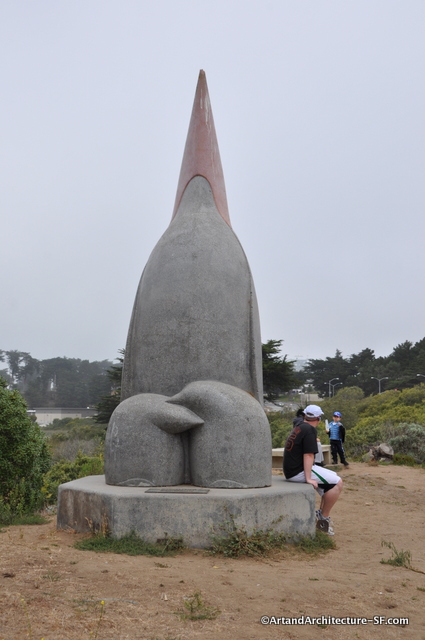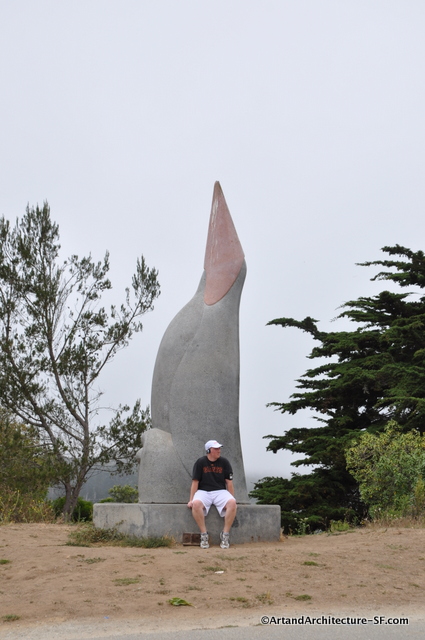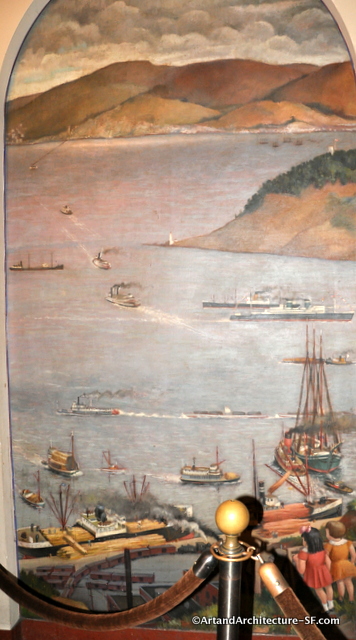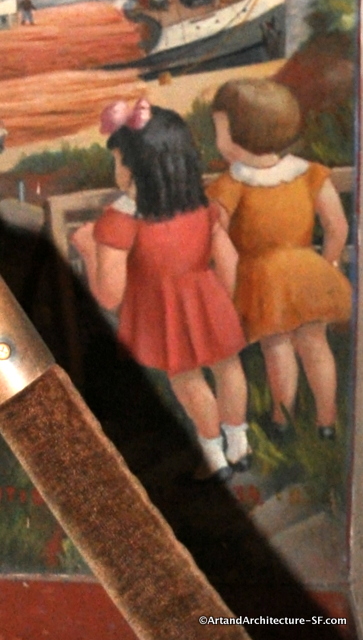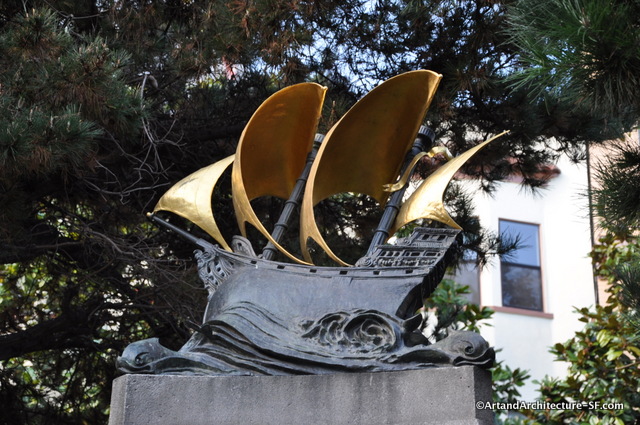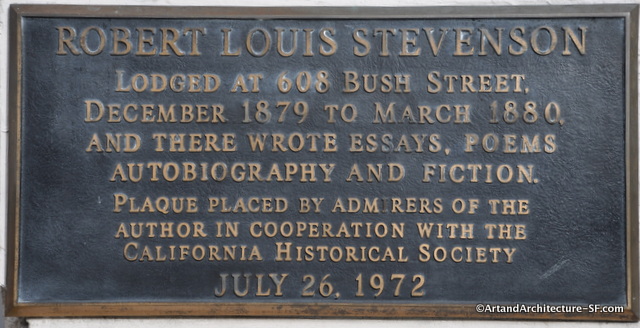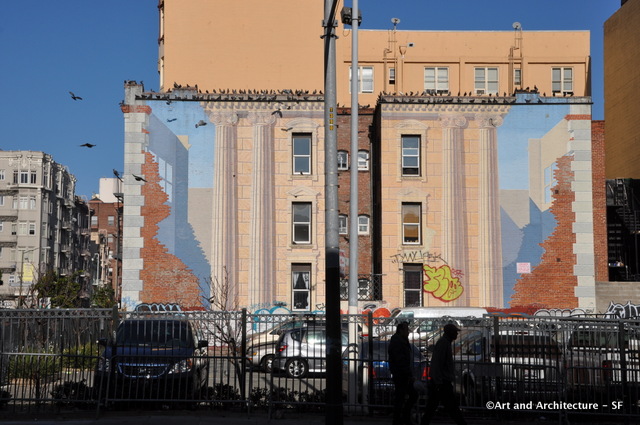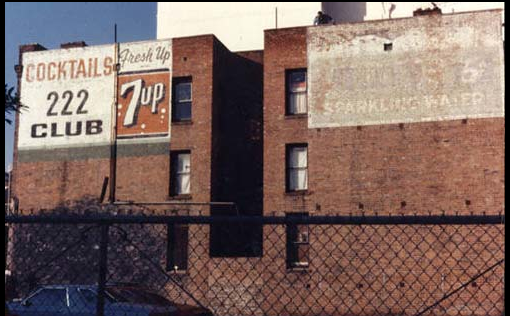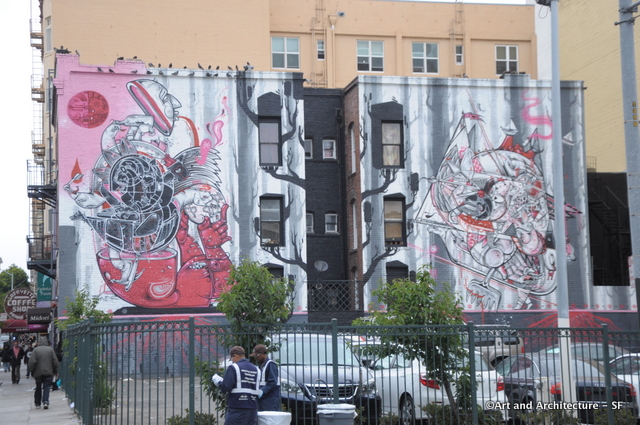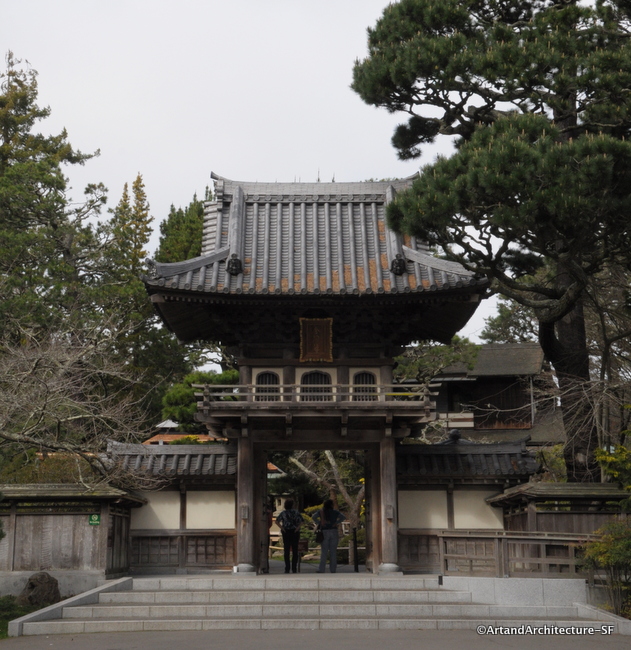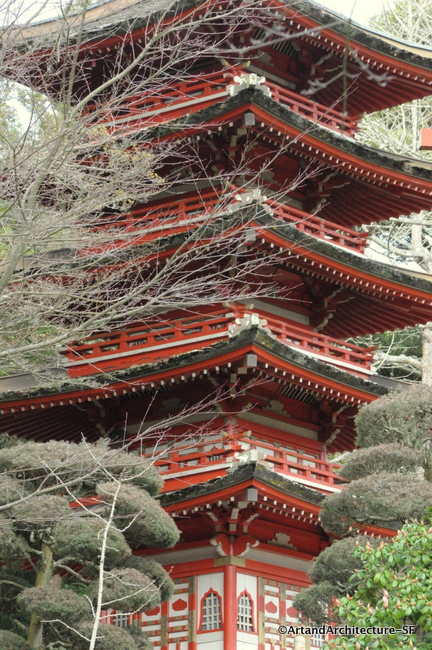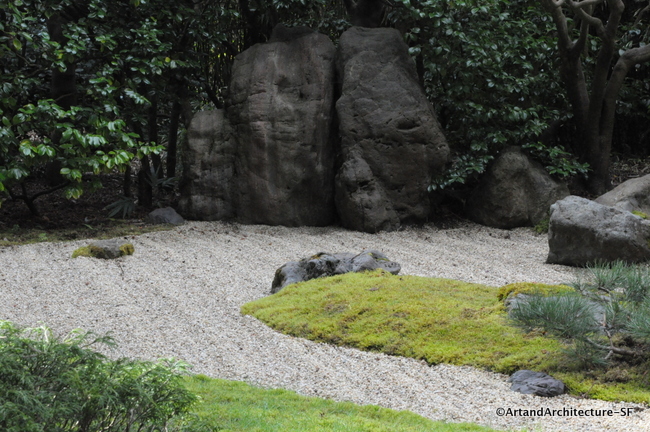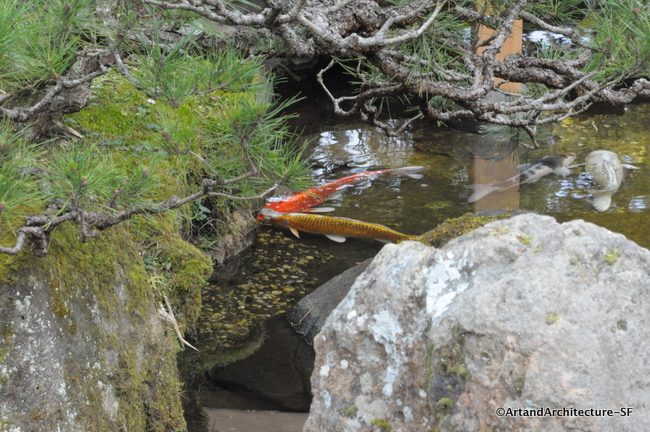This cast stone sculpture is by Helen Phillips. Titled Flutist, it is from the Chinese Musicians Group produced for the Golden Gate International Exposition. This was one of a group of 20 sculptures titled Unity that were produced for the Court of the Pacific.
Phillips was born in 1913 in Fresno, California, and studied at the School of Fine Art in San Francisco. Ralph Stackpole taught her direct carving there, and introduced her to Diego Rivera, who was pointing [sic] murals in the city. She remembered with affection how the Mexican always kept a revolver on the scaffold, more out of showmanship than fear of Stalin’s henchmen. But she found social realism stifling, and was never willing to sacrifice the integrity of form for political content. She was more excited by San Francisco’s collections of American Indian, Chinese, Pre- Columbian and Oceanic art than its struggling factory workers.
In 1936 Phillips received a Phelan Travelling Fellowship to study in Paris, where she assimilated all the new styles, especially Surrealism. She entered Atelier 17, the intaglio print workshop of her future husband Stanley William Hayter, which was a hub of avant-garde experiment. She made some beautiful engravings, but her experience with gravure was even more crucial for her sculptural development, as it forced her to become conscious of negative space. She lost all her carvings of the pre-war years when she fled to New York in 1939.
Such mythic qualities identify Helen Phillips as a sculptural pioneer within the emerging New York School, and indeed she showed in Nicolas Calas’s landmark exhibition “Bloodflumes 1947”, alongside such peers as Arshile Gorky, Wilfredo Lam, Roberto Matta, David Hare and Isamu Noguchi. She published in the avant-garde journal Tiger’s Eye, and it is probable that had she not returned to Paris in 1950 she would have developed a considerable American reputation. Meanwhile, the primitive influence culminated in the 18-foot “Totem” (1955), made up of interrelated limbs and ambiguous suggestions of growth, carved from a discarded 17th-century walnut beam she found in the Ardche.
Phillips was by first inclination a carver: she only started using bronze by chance, when one of her wood carvings split and she wanted to save the image. She soon found herself absorbed by a more linear range of expression suggested by metals, however, and her figures in copper tubing are delightful Calder-like drawings in space. Her compositions in polished bronze exploit light with almost baroque intensity to give the maximum sensation of movement and gesture. “Amants Novices” (1954) is a masterpiece within this genre, its convoluted limbs and its voluptuous edges, corners and bends longingly caressed by light which gives the impression of sweaty exertion. The conflicting sense of precarious balance and vigorous abandon captures the magical clumsiness of sex. The seemingly inevitable ease of a sculpture like this belies the painstaking effort needed to achieve such effects. When a cast returned from the foundry, the work was only half done as far as Phillips was concerned, as she proceeded to file away for months, even years, to capture the “true” forms.
In a completely different vein, Phillips produced an extensive series of geometric constructions in wire which explored ideas of modular growth proposed by the American architectural theorist Buckminster Fuller, and also by Sir Wentworth D’Arcy Thompson, whose Growth and Form (1917, revised 1942) has been a bible for many modern artists. Phillips recalled how she worked out of one volume, her husband Bill Hayter from the other, so they would have interesting things to talk about. Hayter’s wave imagery of the 1960s partly derived from Thompson, while Phillips pursued a complicated set of cubic abstractions to express movement in space. ln these cerebral, aloof creations, as in Bach’s Well-Tempered Clavier, the intriguing poetry has less to do with cold, abstract theory than intuitive, aesthetic decisions.
Until the mid-1960s Helen Phillips enjoyed a growing international reputation, starting with a prize she won in the French heat of the international “Unknown Political Prisoner” competition, in 1952. She collaborated with the architect Erno Goldfinger, who owned her “Suspended Figure” (1956), which was included in the Whitechapel Gallery’s “This is Tomorrow” exhibition of that year. She was cited in Herbert Read’s definitive survey Modern Sculpture (1964), and her works began to enter important collections, including those of Peggy Guggenheim, Roland Penrose, and various American museums.
But disaster struck in 1967, when she severely injured her back moving a heavy sculpture which had just been bought by the Albright Knox Museum in Bufallo (“Alabaster Column”, 1966). She was incapacitated for eight years at a crucial stage of her career, which never recovered. When she finally got back to work, the talent and determination were still there, but somehow the creative impetus could not be regained. She concentrated on seeing earlier ideas through the foundry, and become a familiar figure in Pietra Santa, the town of foundries and carving workshops in Tuscany, during the summer months. She did manage to produce some late intimate pieces in wire, plaster or wax.
Some years ago she sent her friends an eccentric Christmas card, which consisted of a DIY model in balsa wood which, when constructed, showed a couple embracing. Man Ray was so delighted he sent her a photo of the assembled sculpture by return of post. Another endearing tale she used to tell was of a party attended by Calder and Giacometti. Giacometti made a sketch of Calder on a piece of old newsprint. The American demanded to see it, and proceeded to sketch Giacometti next to his own features. They were about to throw it away when Phillips protested, and got to keep these mutual portraits of her friends and idols.
Helen Phillips, artist: born Fresno, California 12 March 1913; married 1940 S.W. Hayter (died 1988; two sons; marriage dissolved 1971); died New York City 23 January 1995.
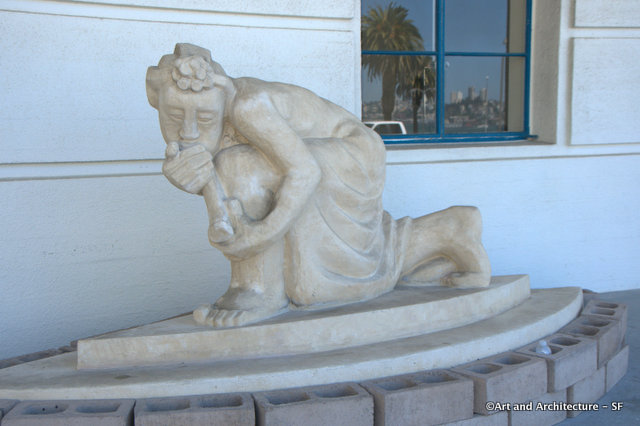
Blowing a Horn, also from the Chinese Musicians Group
These pieces are part of the Treasure Island Development Organization and the Treasure Island Museum.

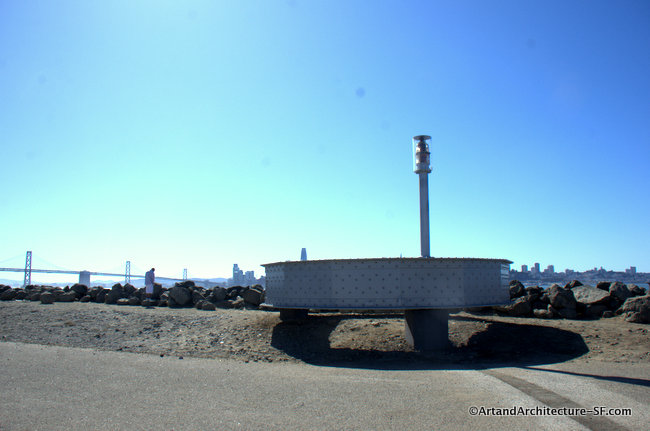
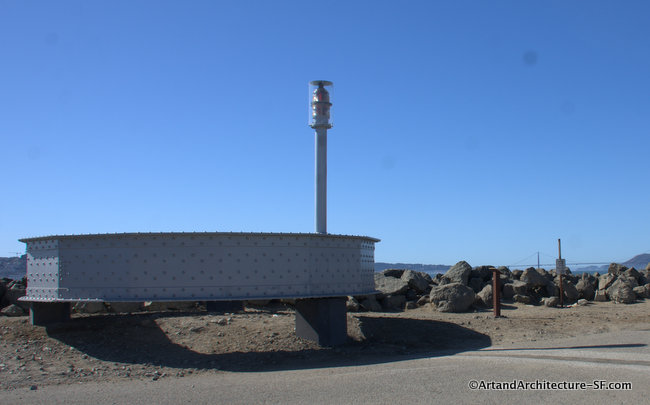

 The museum resides in a 1938 moderne style building designed by William Peyton Day and George William Kelham. It has also been known as Building 1, as Command Naval Base San Francisco Headquarters, as Naval Station Treasure Island and was once used as a terminal and ticket office for Pan American Airlines. It was listed on the National Register of Historic Places in 2008.
The museum resides in a 1938 moderne style building designed by William Peyton Day and George William Kelham. It has also been known as Building 1, as Command Naval Base San Francisco Headquarters, as Naval Station Treasure Island and was once used as a terminal and ticket office for Pan American Airlines. It was listed on the National Register of Historic Places in 2008.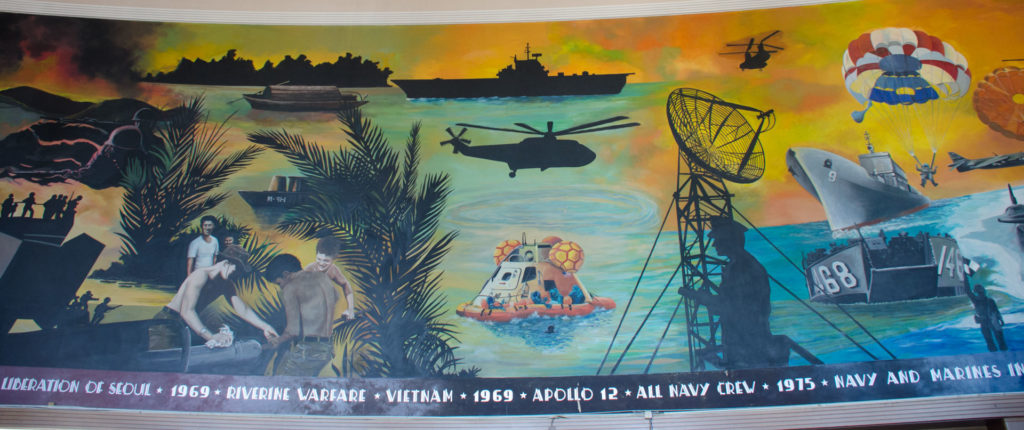
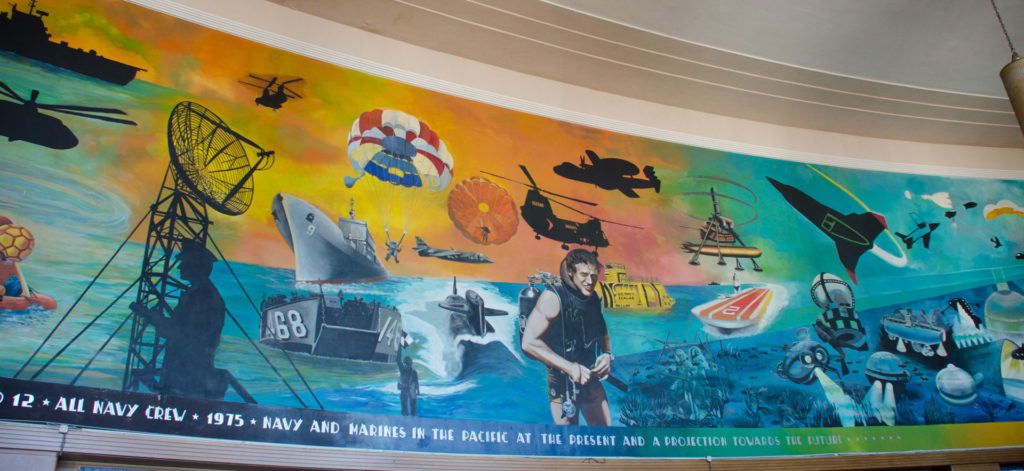
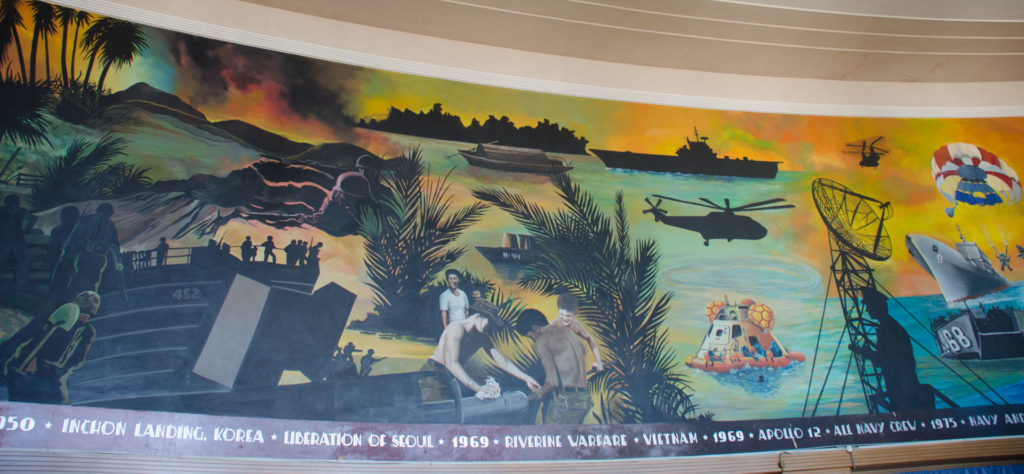
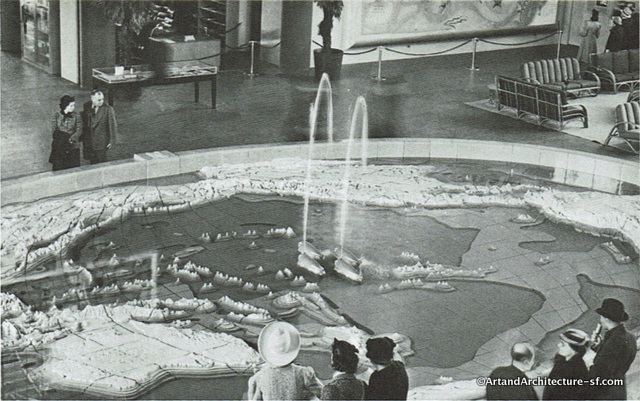
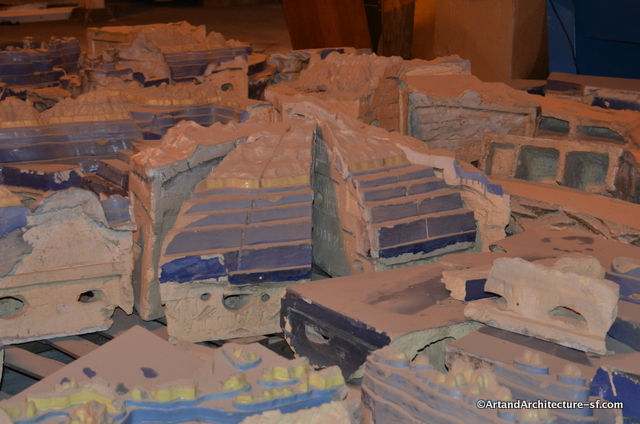
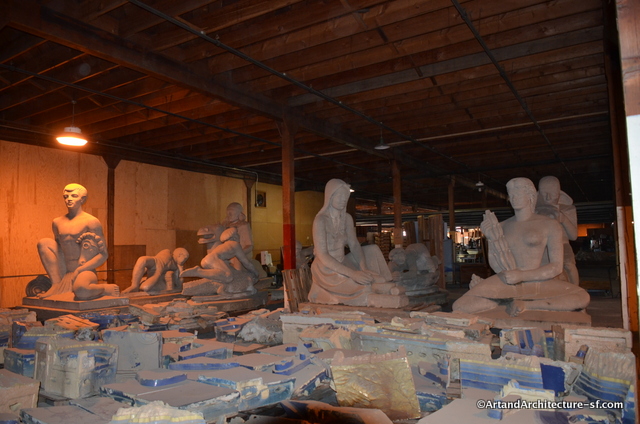
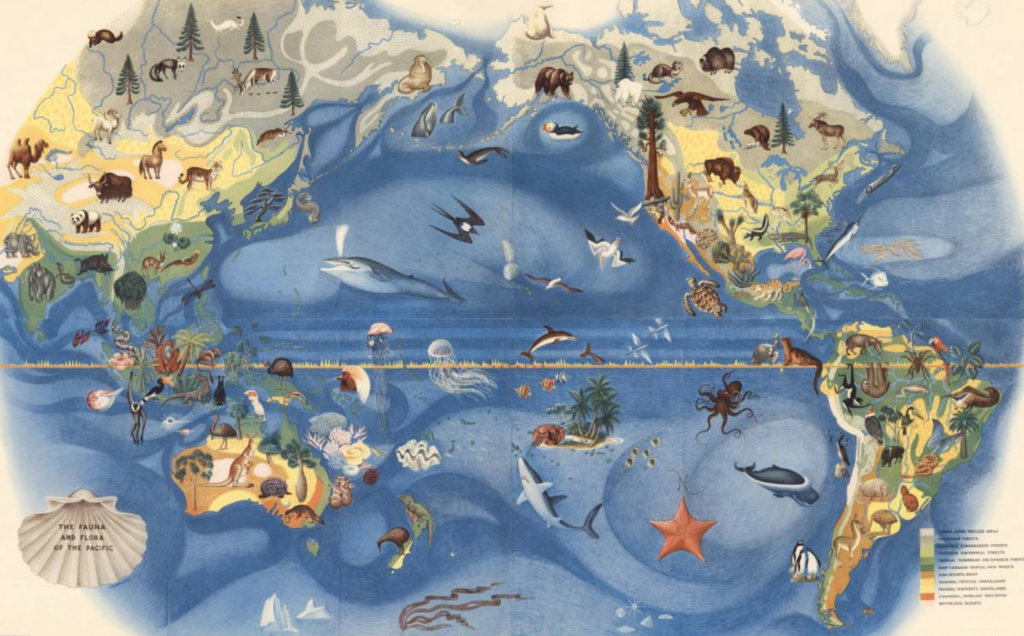


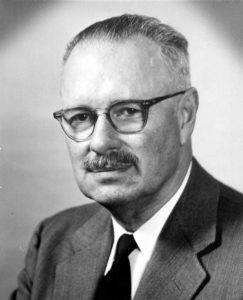
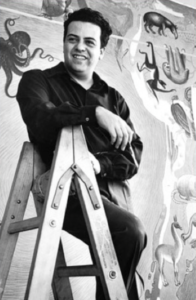 Gladding, McBean
Gladding, McBean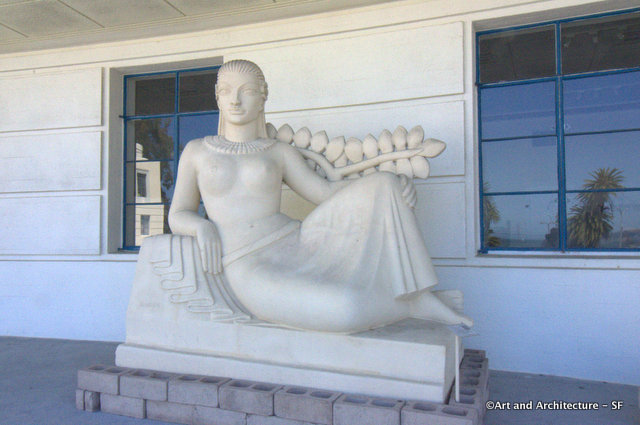
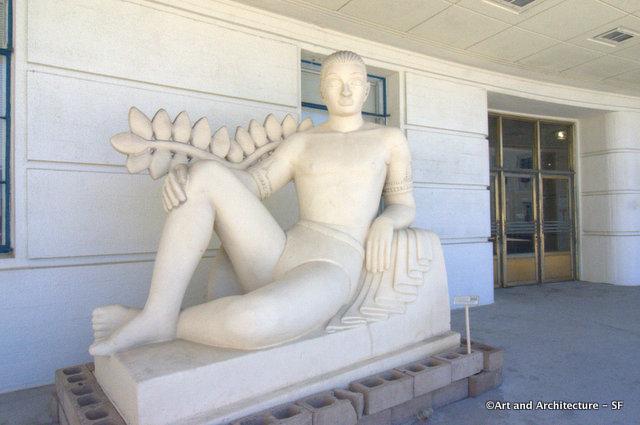
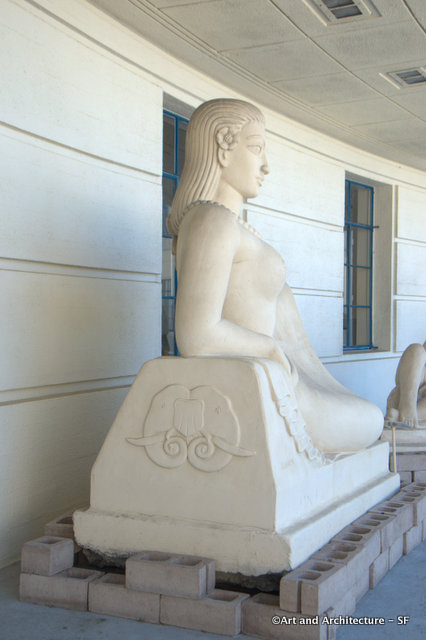
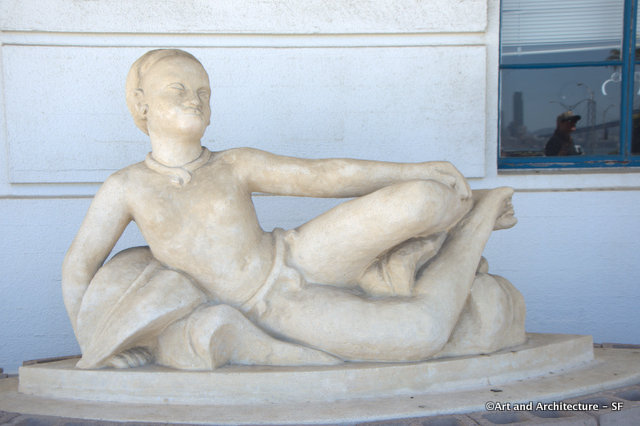
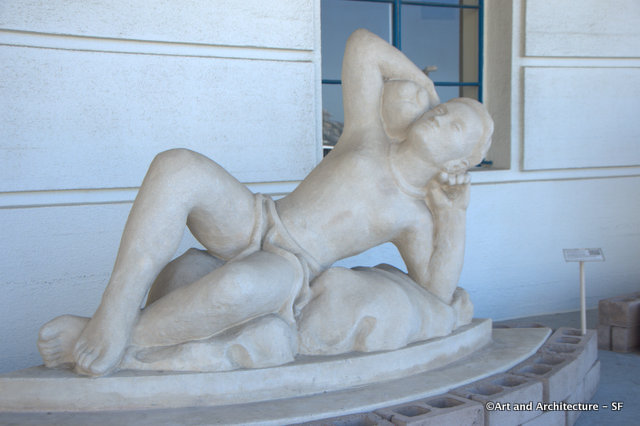
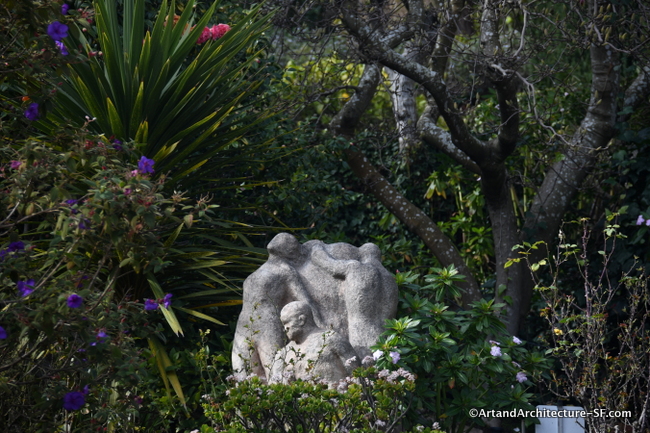

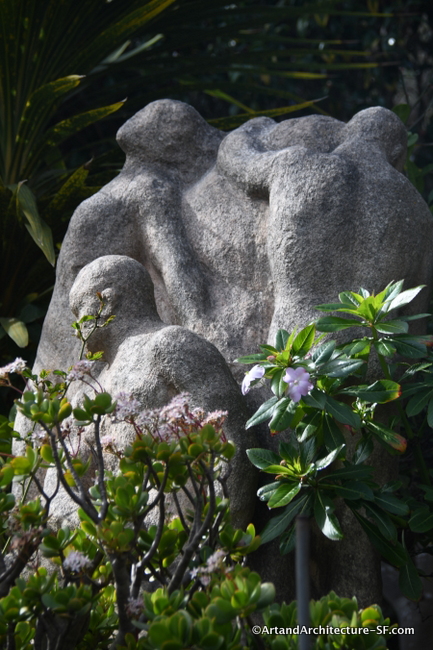
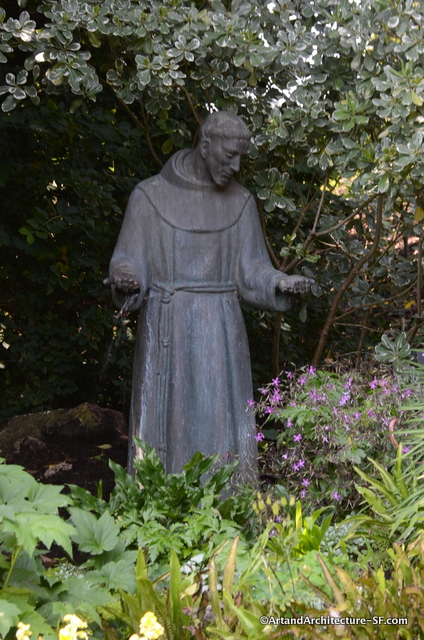
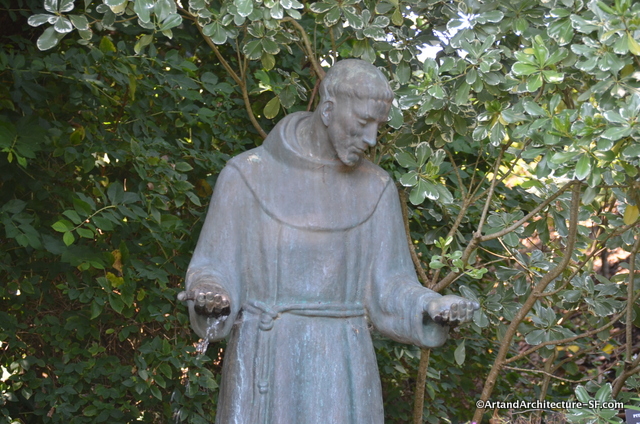
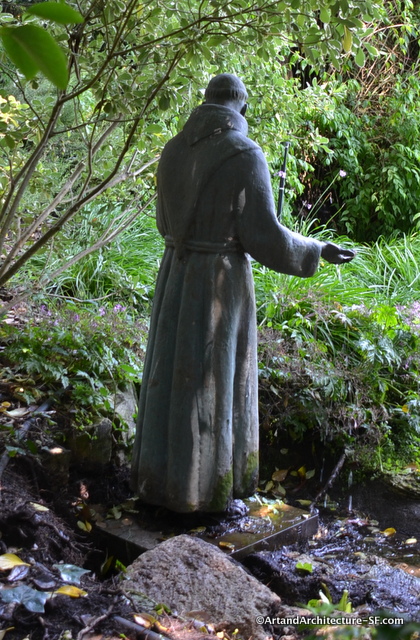
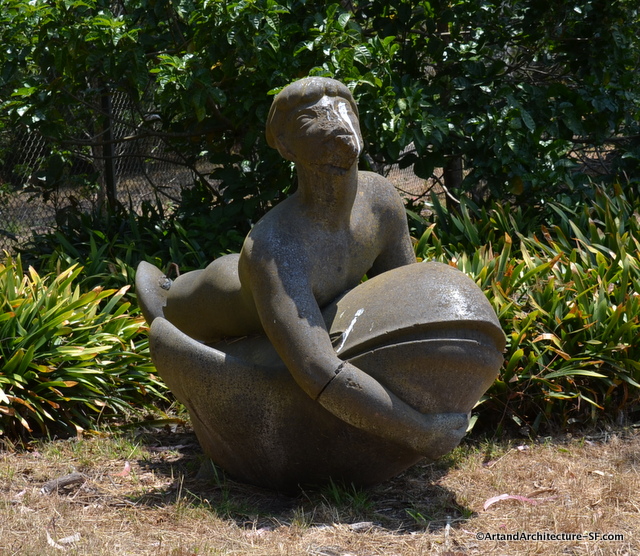
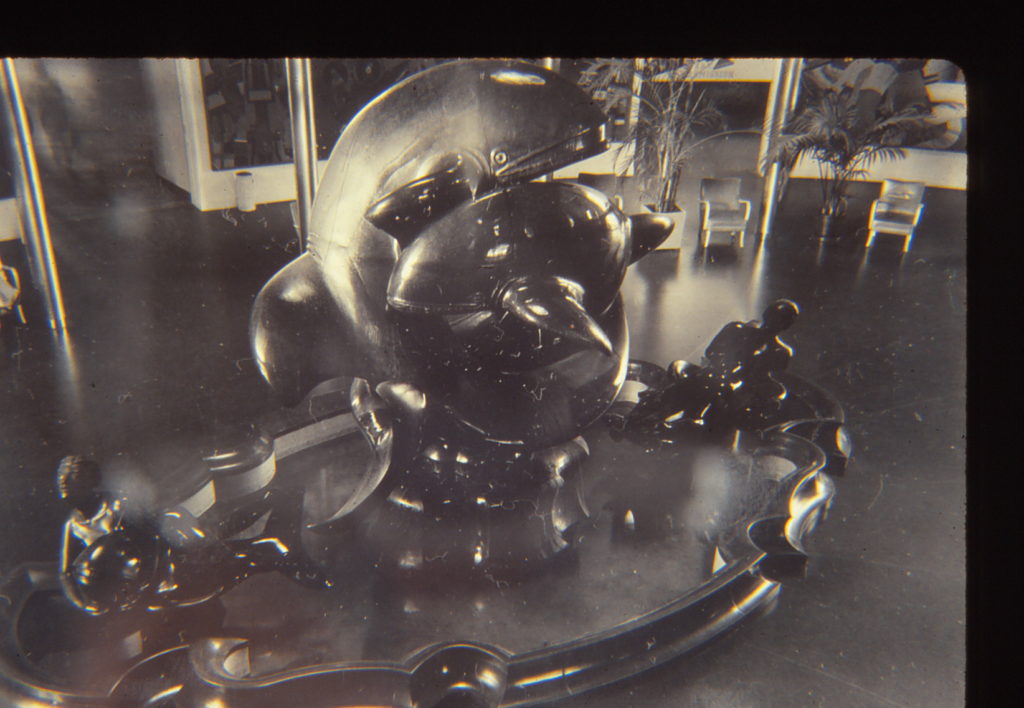
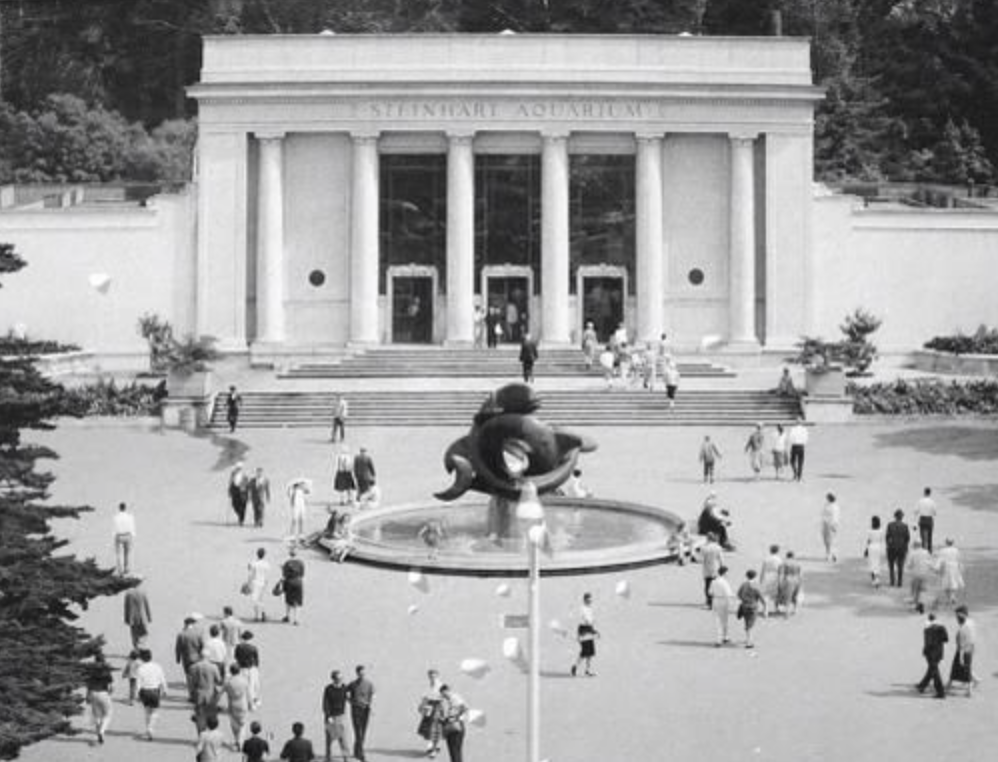 The whales sculpture was moved to a fountain in front of the Steinhart Aquarium, now the Academy of Science, in Golden Gate Park. They are no longer there.
The whales sculpture was moved to a fountain in front of the Steinhart Aquarium, now the Academy of Science, in Golden Gate Park. They are no longer there.